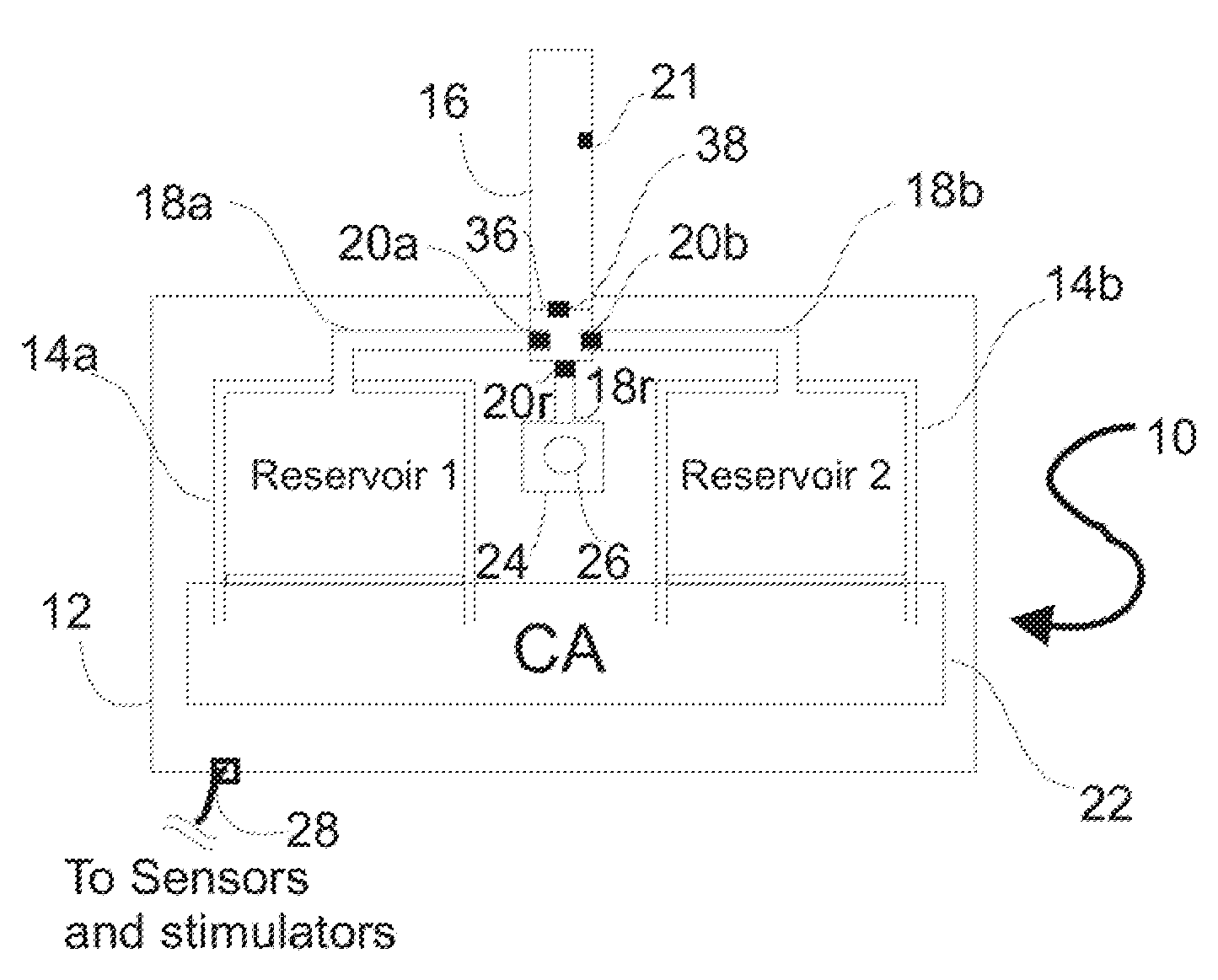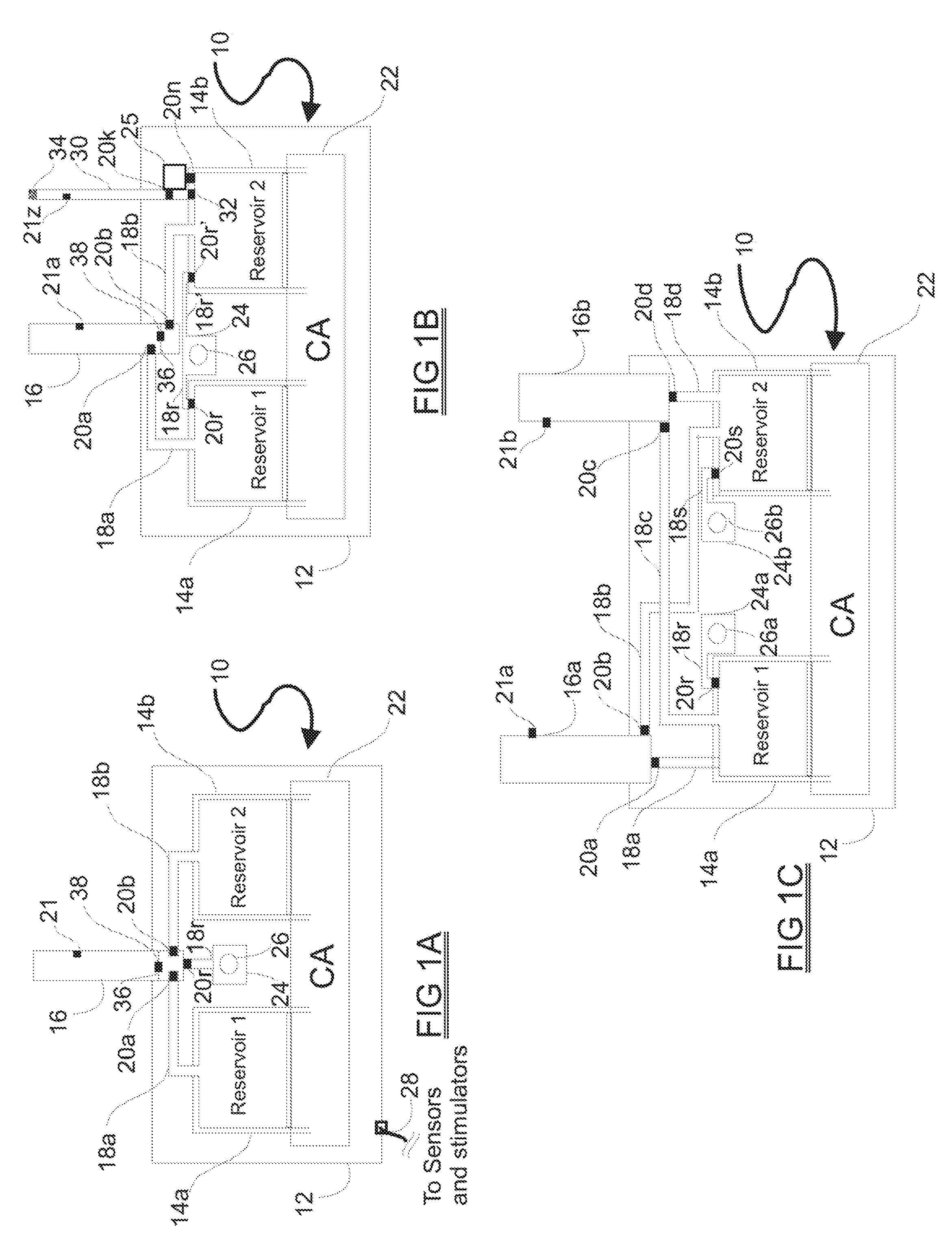Programmable medical drug delivery systems and methods for delivery of multiple fluids and concentrations
a drug delivery system and drug technology, applied in the field of programmable medical drug delivery systems and methods for the delivery of multiple fluids and concentrations, can solve the problems of increasing the probability of unwanted leakage, internal lumen breakage, undetected, etc., and achieve the effect of increasing the time between refilling
- Summary
- Abstract
- Description
- Claims
- Application Information
AI Technical Summary
Benefits of technology
Problems solved by technology
Method used
Image
Examples
Embodiment Construction
[0063]The medical drug delivery system (DDS) is an apparatus which is part of a system that dispenses drugs into any region of the implantee, including the body, organs, brain, vasculature and areas related to reproduction. The terms “drug”, “medication”, “active agent”, or “fluid” can all be used to mean a therapeutic agent delivered with the goal of producing a desired effect. The drug may often be stored within the DDS in the form of a fluid or gel, however, the DDS can also contain powder forms of drugs which are mixed with, dissolved or suspended within fluids prior dispensing them to an implantee. The types of fluids which can be delivered by the DDS include, but are not limited to, medications, vitamins, nutrients, chemicals, antibiotics, hormones or hormonal drugs, catalysts, gene / germ therapies, anticoagulants, chemotherapeutics, antigens, anti-tumor agents, analgesic, anti-inflammatory agents, antioxidants, parasiticides, and others. Other drugs which can be delivered are ...
PUM
 Login to View More
Login to View More Abstract
Description
Claims
Application Information
 Login to View More
Login to View More - R&D
- Intellectual Property
- Life Sciences
- Materials
- Tech Scout
- Unparalleled Data Quality
- Higher Quality Content
- 60% Fewer Hallucinations
Browse by: Latest US Patents, China's latest patents, Technical Efficacy Thesaurus, Application Domain, Technology Topic, Popular Technical Reports.
© 2025 PatSnap. All rights reserved.Legal|Privacy policy|Modern Slavery Act Transparency Statement|Sitemap|About US| Contact US: help@patsnap.com



